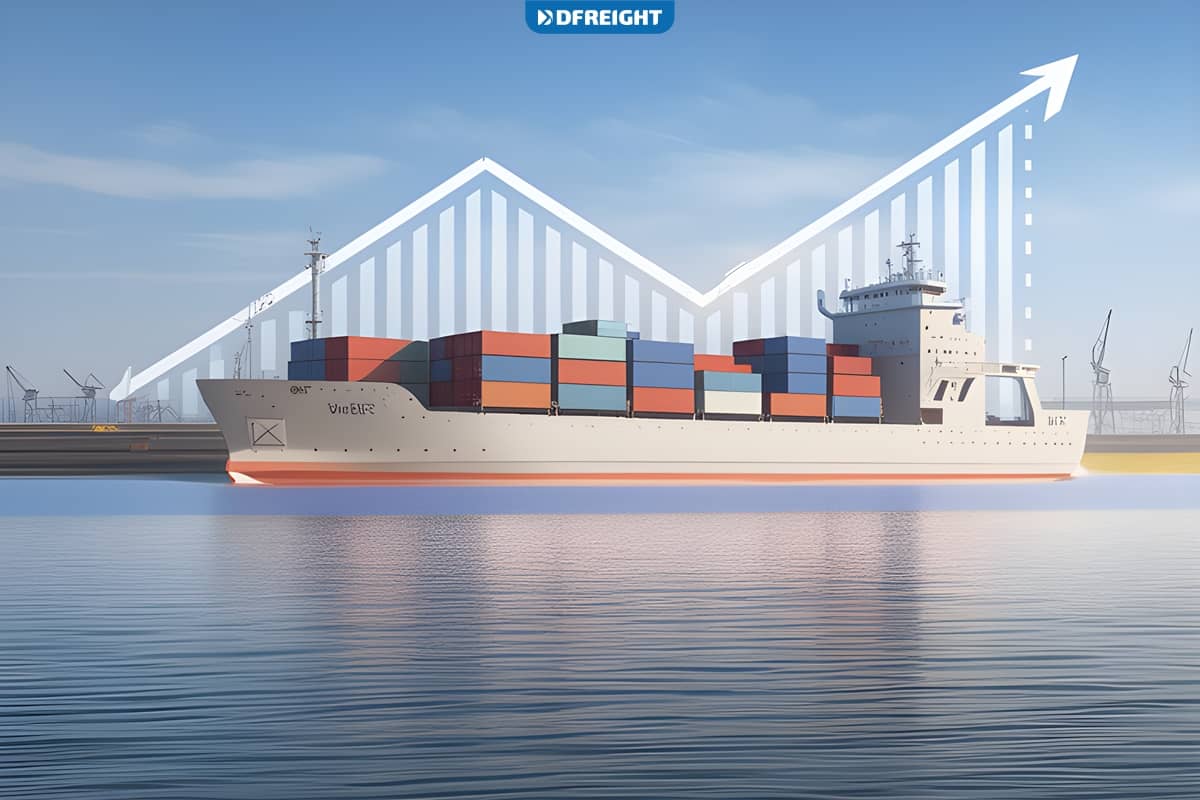Industry leaders at the Xeneta Summit in Amsterdam have been told ocean container shipping must harness the power of machine learning to protect supply chains in an increasingly complex and volatile market.
Machine learning
In a keynote speech today to announce Xeneta’s new in-platform Ocean Market Rate Outlook, Chief Product Officer Fabio Brocca explained how machine learning will transform the way freight is bought and sold by predicting market movements on the world’s major corridors up to six months into the future.
Impossible task ?
He said: “While nobody can predict Covid-19 or the Red Sea Crisis, procurement professionals are constantly making decisions based on their outlook for the next few quarters. When there is so much volatility and uncertainty across global supply chains, providing market guidance feels like an impossible task.
Market Rate Outlook product
“The industry has come a long way using technology and data to improve every procurement process, but thanks to advancement in machine learning and AI we can now go even further by providing explainable predictions on how the market is likely to develop in the future.”
Xeneta is the leading ocean and air freight data and intelligence platform and the new Market Rate Outlook product is unique to the ocean container shipping industry.
Ocean freight rate

The machine-learning model leverages the 500+ million ocean freight rate datapoints in the Xeneta platform, combined with 20+ parameters such as fleet and capacity data, import and export volumes, and macroeconomic factors such as GDP, inflation, PMI and fuel prices.
The outlook
The outlook also includes commentaries by Xeneta’s market analyst team, highlighting assumptions and key factors affecting the freight rate trends. Finally, Xeneta’s customers can provide real world feedback which is anonymized, aggregated, and used to deepen the market outlook further.
Not a crystal ball

Brocca said: “The Market Rate Outlook is not a crystal ball and it cannot predict major events such as the Red Sea crisis or Covid-19. The potential for unknown disruptions to impact the market does not negate the value of the outlook. This is about empowering procurement professionals to make informed decisions based on how the market is likely to develop.
Market Rate Outlook
“Market Rate Outlook explains the assumptions behind its predictions so businesses can make strategic decisions with confidence. We are only at the beginning of the journey, but I have no doubt that a more scientific approach to decision making will become fundamental to the way freight is procured across the market.”
Conflict in the Red Sea
The Xeneta Summit brings together stakeholders from across the ocean and air freight industries to discuss the challenges facing global supply chains, which this year focuses heavily on the ongoing impact of conflict in the Red Sea.
The conflict has seen spot markets spiral across the world’s major trades in 2024, including by more than 450% from the Far East to North Europe and almost 400% into the US West Coast.
Xeneta market data
Brocca believes index-linked contracts, which sees the freight rate paid by shippers tracked against market movements, will become increasingly important in the wake of growing market uncertainty.
He said: “Businesses are facing up to the reality of market volatility and are using data to regain some control.
“Shippers and service providers are turning to index-linked contracts based on Xeneta market data to give assurance the freight rates being paid remain fair and competitive while also ensuring containers are shipped during times of severe disruption.”
Global supply chains
In addition to announcing the Market Rate Outlook, Xeneta has launched a series of further in-platform products at the Summit, including enhanced industry-specific freight rate benchmarking and transit time comparison across trade corridors and carriers.
Brocca said: “Whether it is predicting rate trends, index-linked contracts or being able to benchmark freight rates across peers and carriers, it is now incredibly difficult to navigate global supply chains without having access to the most comprehensive and reliable market data.”
Read more :
At the Xeneta Summit : Reinforce confidence in Gemini alliance
Xeneta : (ILA) union Issues misleading claim of ocean shipping




